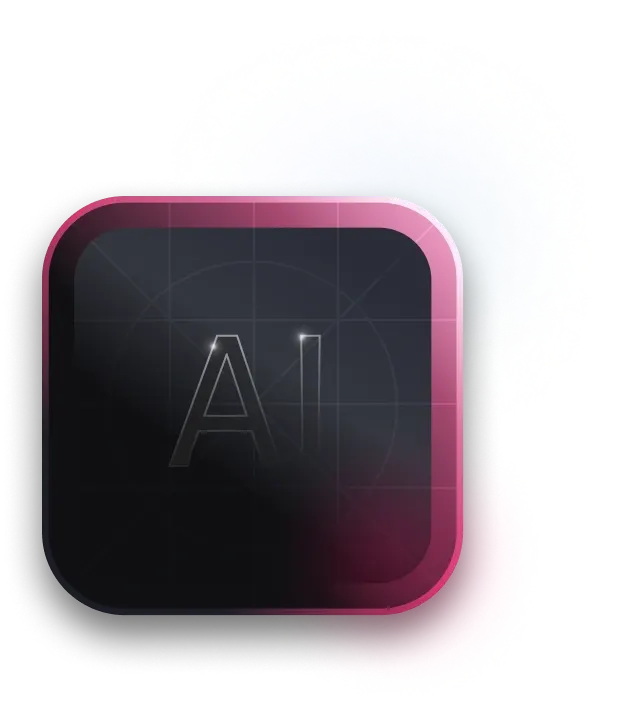How real is the real world? The advancements of modern technology make the boundary between the real and virtual worlds ever flimsier. The contemporary stage of digital innovation has brought forth the phenomenon known as augmented reality (AR) which consists in using displays, monitors, cameras, and sensors to integrate digital data and images into our physical environment.
AR’s triumphant march all over the planet boomed when one of the most successful apps in history was marketed. Soon afterward, Pokémon hunters crowded city streets searching for virtual creatures with mobile phones in their hands.
Today, augmented and virtual reality are more than entertainment. This technology is being increasingly employed in various spheres, such as business logistics, classNameroom education, repair and maintenance, design and modeling, and even tourism. However beneficial in these domains it might be, the use of augmented reality in the medical field is likely to be the greatest boon to humankind. Naturally, health is what people value the most. That’s why medicine has gradually become the priority that contemporary science makes a special emphasis on pushing the frontier of the unknown ever further.
Augmented Reality & Virtual Reality: a Difference that Matters
Before we take a closer look at AR in healthcare, it is important to realize how it differs from another bird of the same feather – virtual reality (VR). Despite both being close relatives and brainchildren of our digital age, these two are not identical.
Virtual reality provides an immersive experience that you undergo in a totally artificial world, a simulated environment. To be able to enjoy realistic images it generates, you need special equipment – a VR headset that contains a head-mounted display where a small screen is located before your eyes. Once you put it on you find yourself in an artificial reality that you can not only see and hear but also travel around interacting with virtual objects present in it.
The same effect may be achieved by placing a person in a special room whose walls are covered with large screens.
By contrast, augmented reality in medicine, or any sphere for that matter, doesn’t take you away from the real world – it adds virtual objects thus enhancing it. Unlike virtual reality, AR doesn’t require any specialized equipment or premises neither does it incur a sharp learning curve.
Being run on smartphones and tablets in the form of applications, it is accessible for a wider audience which explains its greater popularity in comparison with VR.
As eMarketer claims, last year witnessed a prodigious increase in the number of AR users reaching the astounding 70 million in the USA alone which is significantly higher than 43 million VR users.
Benefits Of Augmented Reality in Medicine
Medical AR is a real godsend for both doctors and patients.
Benefits for patients:
-
Safer invasive surgery. AR smart glasses can substitute monitors that display images or critical data conventionally delivered by endoscopic cameras.
-
More information on illness prevention and treatment. AR can provide facts about the way our body works thus it can get us prepared for taking the right medical decisions. Being yet unable to identify diseases or their symptoms, augmented reality medical applications can serve educational purposes for many categories of patients or future parents.
-
Streamlining some medical procedures. Helping to detect where a patient’s veins are located can make taking blood samples or injections more tolerable for them (and simplify nurses’ efforts as well).
-
Improved aftercare. Even when the patient is out of hospital, AR apps can help them stay tuned to the ways of treatment they will undergo at home.
Explore the latest trends and challenges in telemedicine app development
Benefits for doctors:
-
Education and training. Any educational process can be significantly facilitated by leveraging augmented reality and medical training is sure to remarkably benefit from it. The absence of risks and interactive nature make AR a perfect teaching tool.
-
Routine medical tasks. Head-mounted displays, headsets of various kinds, and, finally, simple Google Glass (if “simple” is the right word to be used in this case) leave a doctor’s hands free while showing them the complete picture of what they are dealing with.
-
Enhanced urgent help opportunities. If a person suddenly collapses in the street, the passers-by are typically dumbfounded being at a loss how to help him or her. And the help must be as prompt as possible. A special browser combined with a respective AR app can not only store all emergency numbers but also display where the nearest automated external defibrillator is located and show you the shortest way there.
In addition to these two categories of people using AR, the healthcare industry encompasses drug manufacturers as well. Any pharmaceutical company will also find this top-notch technology of great use to give a 3D image of the way a drug works inside our body. Moreover, it is a surefire recipe to win customers who will consider such videos more helpful (and interesting to boot) than reading through long and boring (and incomprehensible as often as not) drug descriptions.
Given such benefits for all parties of the healthcare industry involved it is no wonder that the medical AR market experiences a rapid boom likely to expand up to 23 percent by 2023. According to ballpark estimates of employing augmented reality in healthcare, statistics show the astounding $1.2 billion as far as its revenue opportunities in 2020 are concerned. However enormous this figure may seem, it is even likely to manifest a 3.5-fold growth by 2025 reaching the unbelievable $5.1 billion.
What are the most prominent trends in employing AR in healthcare right now?
How Is Augmented Reality Used in Medicine?
There are several mainstream tendencies where medical AR makes the greatest advance.
Augmented surgery
A surgeon may be a super talented and experienced professional handling most operations like a twenty-minute cakewalk. Yet any surgery is a risky venture fraught with challenges. AR is called to minimize the risks related to such intrusions into an organism and even save lives, who knows.
First of all, bones, muscles, and blood vessels can appear before a surgeon’s eyes in a 3D image so that the doctor will determine what should be done not when the patient is cut open, but hours before. All that the doctor has to do is to put on the AR headset and spare the patients cutting their bodies. Of course, before that the corresponding MRI data and CT scans are entered into the headset but then the surgeon will have plenty of time to make up their mind as to the precise location of an incision or injection. Second of all, the doctor can have real-time access to all crucial data about the patient without any need to search for records anywhere – this is where our company has a comprehensible experience. Such data is vital in case of an emergency when any second lost may spell lots of problems for the patient.
Treatment & prevention
Although the first three fields dominate in augmented reality health care the application of this technology isn’t limited to them. It can not only be a valuable help to people in treating maladies but can also cure some of them. For instance, anxiety disorders and phobias can be efficiently handled by producing artificial stimuli which will eventually habituate patients to the environments causing such disorders.
It is universally recognized that preventing an illness is much better than trying to treat the patient who develops it. And any prevention works much better if it is turned into a game. Realizing that, web developers designed an app that is called to encourage budding joggers in their efforts. After downloading Zombies, Run! they will find themselves chased by strange groaning creatures, which is enough for any person to speed up trying to escape from them. Here augmented reality uses in medicine and entertainment overlap turning health maintenance into fun – the domain out company excels at.
Our AI and Data Science Case Studies

AR medical education and training
As Requestum specialists believe, the hands-on learning experience this technology can provide will revolutionize medical education in the nearest future. Simulated surgeries and disease diagnosing will allow students to encounter dozens of cases to deal with. A great way to thread their way through mistakes treating virtual patients instead of endangering real people. One of the typical augmented reality use cases in healthcare that facilitates training is projecting anatomy data on a 3D skeleton to visualize the work of various organs. Another advantage of AR technology is ensuring a systematic approach to studying. Random training with what is available in a dissection lab precludes students from getting a consistent picture. Utilizing augmented reality, they can receive an exhaustive experience related to a certain organ or disease.
Diagnosing problems
Accurately describing symptoms was never an easy job for patients, especially elderly ones and infants. With the help of augmented reality, medical diagnosing will become much easier enabling patients to better explain their concerns. For example, EyeDecide app was developed that manifests to patients cataract or age-related macular degeneration effects so that they could single out similar symptoms.
Besides, some conventional procedures may be facilitated. For instance, 40% of intravenous injections are mishandled because a nurse can’t hit the vein with the first stick. AccuVein eliminates such problems allowing nurses to locate the veins easily.
Build innovative and scalable software with us
Challenges of Using AR in Healthcare
Although augmented reality has enormous potential in medicine, several obstacles still prevent its wide adoption. The most common challenges include:
Funding difficulties
Many AR/VR healthcare startups struggle to secure the financial support needed for research, product development, and scaling. While hospitals and private organizations are beginning to invest more, larger funding opportunities are still required to bring AR solutions into everyday use.
Technology limitations
Current AR devices and software are not always powerful or precise enough for clinical needs. Issues such as limited resolution, processing power, and integration with hospital systems slow down adoption, though steady improvements are being made.
Slow organizational change
The healthcare industry is traditionally cautious and heavily regulated, which makes new technology adoption slow. Complex procurement processes and reliance on outdated systems create additional barriers for AR solutions.
Lack of awareness
Many people still associate AR with gaming and entertainment rather than practical medical use. Without proper training and education, medical staff may be hesitant to use AR tools. Demonstrations and hands-on experience can help bridge this gap.
Regulatory hurdles
Bringing any new technology into healthcare requires strict compliance with laws, safety standards, and insurance policies. While these rules are necessary for patient protection, they add extra complexity and cost to AR adoption.
Augmented Reality Medicine: A Glimpse Into the Future
As augmented reality continues to mature, its applications in medicine are expanding beyond early experiments and into practical use. AR is changing how healthcare professionals deliver care and how patients experience treatment. Below are some of the most promising trends.
Robotic-assisted surgery
AR is enhancing robotic-assisted surgery by providing real-time overlays of critical data during procedures. This guidance improves surgical precision, supports decision-making, and contributes to safer operations and better patient outcomes.
Wound care innovation
In wound management, AR allows clinicians to visualize injuries in 3D, track healing progress, and create tailored treatment plans. These capabilities speed up recovery and improve patient comfort throughout the healing process.
Rehabilitation and physical therapy
AR applications make therapy more engaging by offering interactive exercises and real-time feedback. Patients can follow guided movements, monitor progress, and stay motivated, leading to more effective rehabilitation results.
Instant access to patient data
With AR-enabled devices, healthcare providers can instantly access patient records and vital information at the point of care. This improves workflow efficiency, supports accurate decision-making, and ensures clinicians work with up-to-date data.
Hospital navigation
AR wayfinding tools simplify navigation in large medical facilities by showing step-by-step directions and floor maps. This reduces stress for patients and visitors while improving efficiency for staff.
Tips to Maximize the Benefits of AR in Healthcare
Augmented reality can transform healthcare, but its impact depends on how it is introduced and used. To make the most of this technology, healthcare providers should keep the following points in mind:
-
Select the right technology: Not all AR solutions are the same. Each comes with its own strengths and weaknesses. When choosing a system, consider cost, ease of use, and accuracy to ensure the technology fits clinical needs and workflows;
-
Provide training for staff and patients: Since AR is still relatively new in medicine, both professionals and patients may be unfamiliar with it. Training should cover not only how to operate AR devices but also how to integrate them effectively into daily medical routines;
-
Prioritize safety and data security: AR systems process sensitive patient information, making them a potential target for cyberattacks. Strong security measures (including encryption, firewalls, and antivirus protection) are essential to safeguard patient privacy and meet regulatory standards;
-
Keep patients at the center: The ultimate goal of AR in healthcare should be to improve patient experience and outcomes. Every solution must be designed with patients in mind, ensuring that the technology contributes to better treatment, faster recovery, and higher quality of care.
Conclusion
In the digital world of today, augmented reality is increasingly becoming an inalienable part of many branches of industry and entertainment so health care is no exception. With the enhanced opportunities it offers for diagnosis, treatment, and training, AR has all chances to develop into a powerful tool for improving the quality of life. Do you have a project idea? Don’t hesitate to contact us to get consultation and development quote from our augmented reality experts.

Our team is dedicated to delivering high-quality services and achieving results that exceed clients' expectations. Let’s discuss how we can help your business succeed.

SHARE: